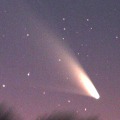
|
Now it is 2.5 mag (Mar. 1, Michael Mattiazzo). Although it had been brightening as expected until late December, the brightening has got slow down in January. It was expected to be a great comet of -1 mag in spring, however, it will brighten only up to 2 mag at best. But it is very strongly condensed. It locates extremely low in the Southern Hemisphere. In the Northern Hemisphere, it will appear in the extremely low evening sky in mid March.
Date(TT) R.A. (2000) Decl. Delta r Elong. m1 Best Time(A, h)
Mar. 2 23 33.62 -25 15.8 1.105 0.391 20 2.6 19:20 ( 73,-18)
Mar. 9 0 18.02 -8 10.9 1.105 0.304 15 1.8 19:26 ( 86, -7)
|
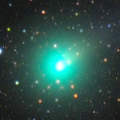
|
Brightened much faster than expected, and it became a naked eye bright comet. Now it is so bright as 4.8 mag (Feb. 26, Marco Goiato). It has a long ion tail. However, the brightness evolution has been slow down in February. It will approach to the sun down to 0.73 A.U. on Mar. 24. It was expected to brighten up to 3 mag, but actually, it will be 4.5 mag at best. It is observable in good condition in the Southern Hemisphere. It is not observable now in the Northern Hemisphere. But it becomes observable again in May, and it keeps observable in good condition after that while fading gradually.
Date(TT) R.A. (2000) Decl. Delta r Elong. m1 Best Time(A, h)
Mar. 2 0 5.05 -50 4.1 1.180 0.857 45 4.9 19:20 ( 46,-25)
Mar. 9 0 7.98 -41 27.7 1.274 0.794 38 4.7 19:26 ( 57,-27)
|
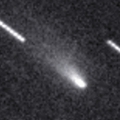
|
Got brighter than expected after the outburst on Jan. 24. It brightened up to 9.2 mag on Feb. 4 (Michael Mattiazzo). However, it suddenly faded down to 10.5 mag and got diffuse on Feb. 5 (Michael Mattiazzo). It approached to the Sun down to 0.3 A.U. on Feb. 24. In the Northern Hemisphere, it will appear in the morning sky in mid March. However, because the comet is small, it could have been disintegrated. In the Southern Hemisphere, it locates extremely low in early March. But it will be unobservable after that.
Date(TT) R.A. (2000) Decl. Delta r Elong. m1 Best Time(A, h)
Mar. 2 21 28.24 -15 11.1 0.925 0.368 21 8.0 5:04 (285, -6)
Mar. 9 21 22.42 -0 42.8 0.985 0.494 28 9.4 4:55 (276, 7)
|
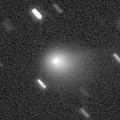
|
It brightened up to 9.0 mag in 2012 autumn (Nov. 4, Juan Jose Gonzalez). Appearing in the morning sky in the Southern Hemisphere. It keeps observable in good condition while fading slowly after this. However, Michael Mattiazzo reported that it was fainter than 12 mag on Feb. 2, much fainter than predicted. In the Northern Hemisphere, it is hardly observable after 2013.
Date(TT) R.A. (2000) Decl. Delta r Elong. m1 Best Time(A, h)
Mar. 2 21 22.13 -40 59.0 2.605 1.939 39 9.2 5:04 (307,-19)
Mar. 9 21 46.93 -41 44.7 2.589 1.971 42 9.3 4:55 (308,-20)
|
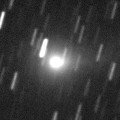
|
Long-lost comet for almost 200 years since 1827. Finally re-discovered by Rob Matson from SWAN images of mid November. Now it is 11.0 mag (Feb. 24, Marco Goiato). In the Northern Hemisphere, it keeps observable in excellent condition while fading after this. In the Southern Hemisphere, it is only observable in low sky from February to March.
Date(TT) R.A. (2000) Decl. Delta r Elong. m1 Best Time(A, h)
Mar. 2 17 49.67 25 58.7 1.311 1.504 80 11.0 5:04 (280, 61)
Mar. 9 17 29.32 32 39.8 1.251 1.596 89 11.3 4:55 (272, 72)
|
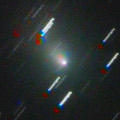
|
Now it is so bright as 10.8 mag (Feb. 28, Sandor Szabo). In the Northern Hemisphere, it keeps observable in good condition until April. It is not observable now in the Southern Hemisphere. It will become observable after April, but it keeps locating low.
Date(TT) R.A. (2000) Decl. Delta r Elong. m1 Best Time(A, h)
Mar. 2 2 47.58 35 9.7 1.856 1.778 69 12.3 19:20 (104, 51)
Mar. 9 3 3.96 31 48.3 1.899 1.730 64 12.3 19:26 (101, 47)
|
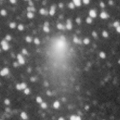
|
Now it is bright as 11.8 mag (Feb. 7, Alexandre Amorim). It is expected to be observable at 11-13 mag for a long time from 2012 summer to 2013 summer.
Date(TT) R.A. (2000) Decl. Delta r Elong. m1 Best Time(A, h)
Mar. 2 16 4.25 -18 44.0 2.257 2.599 98 12.4 5:04 (354, 36)
Mar. 9 15 57.63 -16 0.4 2.169 2.646 107 12.4 4:51 ( 0, 39)
|

|
It brightened up to 11-12 mag in 2012. Now it is 13.3 mag (Feb. 2, Jakub Cerny). It will be observable at 12-13 mag in good condition again in 2013.
Date(TT) R.A. (2000) Decl. Delta r Elong. m1 Best Time(A, h)
Mar. 2 15 18.45 -17 11.6 5.259 5.669 109 12.9 4:40 ( 0, 38)
Mar. 9 15 13.13 -17 0.7 5.158 5.691 117 12.9 4:07 ( 0, 38)
|

|
It brightened rapidly, and reached up to 12 mag in 2012. Appearing in the mornig sky again. It will be observable at 12-14 mag in good condition again in 2013. However, it locates somewhat low in the Northern Hemisphere in 2013. By the way, Juan Jose Gonzalez reported it is extremely bright as 9.6 mag on Jan. 20.
Date(TT) R.A. (2000) Decl. Delta r Elong. m1 Best Time(A, h)
Mar. 2 18 42.89 -23 57.1 3.222 2.885 61 13.5 5:04 (317, 17)
Mar. 9 18 53.09 -24 11.2 3.140 2.888 66 13.5 4:55 (319, 18)
|
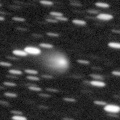
|
Now it is 13.3 mag (Nov. 15, Sandor Szabo). It keeps bright at 13-14 mag for a long time until 2014. It keeps observable for a long time in the Northern Hemisphere. It is not observable in the Southern Hemisphere.
Date(TT) R.A. (2000) Decl. Delta r Elong. m1 Best Time(A, h)
Mar. 2 21 11.66 29 32.1 6.600 5.927 43 13.7 5:04 (249, 22)
Mar. 9 21 13.92 29 37.5 6.579 5.922 45 13.7 4:55 (250, 26)
|
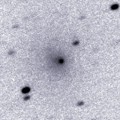
|
Carlos Labordena reported it is extremely bright as 11.4 mag on Feb. 6. However, it is extremely diffuse.
Date(TT) R.A. (2000) Decl. Delta r Elong. m1 Best Time(A, h)
Mar. 2 14 11.27 -23 59.9 5.645 6.228 122 13.7 3:33 ( 0, 31)
Mar. 9 14 10.01 -24 5.4 5.553 6.227 129 13.7 3:04 ( 0, 31)
|
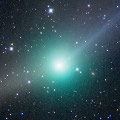
|
It kept as bright as 6-7 mag for a long time from 2011 summer to 2012 spring. Now it is fading. But it is bright as 15.2 mag still now (Feb. 2, Jakub Cerny).
Date(TT) R.A. (2000) Decl. Delta r Elong. m1 Best Time(A, h)
Mar. 2 8 31.01 -10 10.7 4.393 5.200 140 13.9 21:49 ( 0, 45)
Mar. 9 8 25.40 -9 49.7 4.516 5.263 134 14.0 21:16 ( 0, 45)
|
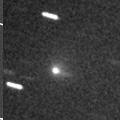
|
Now it is 13.6 mag (Feb. 17, Todd Augustyniak). It is fainter than originally predicted by 1 mag. It will brighten up to 14 mag until spring. In the Northern Hemisphere, it keeps observable in excellent condition. In the Southern Hemisphere, it keeps locating extremely low for a while.
Date(TT) R.A. (2000) Decl. Delta r Elong. m1 Best Time(A, h)
Mar. 2 9 53.01 32 5.5 1.061 1.990 151 14.1 23:11 ( 0, 87)
Mar. 9 9 47.12 30 18.2 1.071 1.977 146 14.0 22:37 ( 0, 85)
|
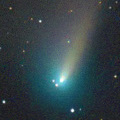
|
It approached to the earth down to 0.3 A.U. and brightened up to 7-8 mag from late December to early January. However, it will go away from the earth and fade out rapidly after this. It has already faded down to 13.8 mag (Feb. 28, Sandor Szabo). It is observable in good condition also in the Southern Hemisphere after this.
Date(TT) R.A. (2000) Decl. Delta r Elong. m1 Best Time(A, h)
Mar. 2 4 12.55 -16 20.9 1.741 1.827 78 14.1 19:20 ( 31, 33)
Mar. 9 4 17.36 -16 51.8 1.915 1.904 74 14.5 19:26 ( 38, 29)
|
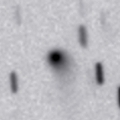
|
It is expected to keep 13 mag and observable in good condition in the Northern Hemisphere for a long time from 2013 to 2014. Now it is 14.3 mag (Feb. 28, Sandor Szabo). It will be observable also in the Southern Hemisphere from early December to early March, although it locates low.
Date(TT) R.A. (2000) Decl. Delta r Elong. m1 Best Time(A, h)
Mar. 2 10 29.48 43 42.9 3.543 4.378 143 14.2 23:47 (180, 81)
Mar. 9 10 17.64 45 18.3 3.558 4.340 137 14.1 23:07 (180, 80)
|

|
Big asteroid discovered in 1906. It suddenly showed the cometary activity on Dec. 11, 2010, probably due to an impact of a small object. Now it is 11.9 mag (May 29, Marco Goiato). It has already turned to be stellar. It is not observable now.
Date(TT) R.A. (2000) Decl. Delta r Elong. m1 Best Time(A, h)
Mar. 2 22 6.52 -22 33.8 3.645 2.724 18 14.4 5:04 (286,-17)
Mar. 9 22 18.78 -21 40.0 3.629 2.736 22 14.4 4:55 (286,-16)
|
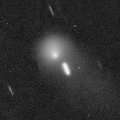
|
Now it is 14.7 mag (Feb. 3, Jakub Cerny). It will be fading slowly after this. But it keeps 15 mag in 2013. It is observable in good condition in the Southern Hemisphere. It becomes observable in the extremely low sky from January to February in the Northern Hemisphere.
Date(TT) R.A. (2000) Decl. Delta r Elong. m1 Best Time(A, h)
Mar. 2 3 0.26 -37 16.0 6.652 6.275 63 14.6 19:20 ( 35, 7)
Mar. 9 3 2.67 -35 54.3 6.731 6.299 60 14.6 19:26 ( 40, 4)
|

|
Now it is bright and visible visually at 12.9 mag (Jan. 3, Chris Wyatt). It keeps 12-14 mag until February. It keeps observable in good condition in the Northern Hemisphere. In the Southern Hemisphere, it locates extremely low, and will be unobservable soon.
Date(TT) R.A. (2000) Decl. Delta r Elong. m1 Best Time(A, h)
Mar. 2 1 49.14 17 27.5 3.804 3.263 50 14.8 19:20 ( 90, 32)
Mar. 9 1 59.77 17 29.3 3.895 3.281 45 14.9 19:26 ( 93, 27)
|
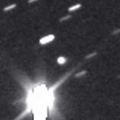
|
Now it is 15.0 mag (Feb. 2, Uwe Pilz). Already visible visually. It is expected to be a great comet in 2013 autumn when the comet approaches to the sun down to only 0.01 A.U. It keeps visible with naked eyes from November to January, and can be extremely bright as Venus or more at the highlight. The condition is excellent in the Northern Hemisphere. It keeps observable almost all through the period of brightening, at the highlight, and of fading. The condition is not good in the Southern Hemisphere. It is not observable at all the latter part of the highlight, and it keeps low all through the period.
Date(TT) R.A. (2000) Decl. Delta r Elong. m1 Best Time(A, h)
Mar. 2 6 50.22 31 31.5 4.041 4.605 119 15.2 20:09 ( 0, 86)
Mar. 9 6 45.68 31 20.7 4.071 4.525 111 15.1 19:37 ( 0, 86)
|
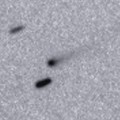
|
Now it is 16.3 mag (Feb. 10, Hiroshi Abe). It keeps bright as 13-14 mag for a long time from 2013 to 2014.
Date(TT) R.A. (2000) Decl. Delta r Elong. m1 Best Time(A, h)
Mar. 2 14 51.91 -11 7.8 2.992 3.558 117 15.3 4:13 ( 0, 44)
Mar. 9 14 52.38 -11 10.7 2.888 3.543 124 15.2 3:46 ( 0, 44)
|
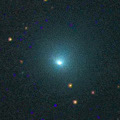
|
First return of a new periodic comet discovered in 1994. It brightened rapidly and reached up to 10.6 mag (Dec. 13, Katsumi Yoshimoto). Now it is fading, but it is bright as 11.5 mag still now (Feb. 10, Uwe Pilz). It has a large diffuse coma. It keeps locating high for a while, but it will be fading after this.
Date(TT) R.A. (2000) Decl. Delta r Elong. m1 Best Time(A, h)
Mar. 2 3 48.57 -4 33.4 1.715 1.726 73 15.4 19:20 ( 45, 40)
Mar. 9 4 6.96 -3 50.8 1.818 1.785 72 15.8 19:26 ( 49, 38)
|
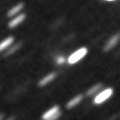
|
Now it is 15.6 mag (Jan. 23, W. Hasubick). It will brighten up to 12 mag from summer to autumn in 2013. In the Northern Hemisphere, it is observable only until spring when the comet brightens up to 15 mag. In the Southern Hemisphere, it keeps unobservable until August. Then it keeps observable while fading gradually.
Date(TT) R.A. (2000) Decl. Delta r Elong. m1 Best Time(A, h)
Mar. 2 1 2.06 47 32.4 2.975 2.657 61 15.6 19:20 (128, 35)
Mar. 9 1 19.28 46 27.6 2.977 2.587 57 15.5 19:26 (127, 32)
|
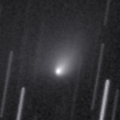
|
Now it is visible visually at 13.7 mag (Dec. 23, Juan Jose Gonzalez). It keeps 15 mag until March. In the Northern Hemisphere, it keeps observable for a long time until the comet fades out. It is not observable in the Southern Hemisphere, except for 2013 spring, but the comet locates extremely low only.
Date(TT) R.A. (2000) Decl. Delta r Elong. m1 Best Time(A, h)
Mar. 2 4 4.29 35 12.1 2.263 2.386 84 15.5 19:20 ( 99, 66)
Mar. 9 4 12.00 32 13.4 2.400 2.412 78 15.7 19:26 ( 95, 60)
|

|
Now it is 15.8 mag, brighter than expected (Feb. 4, Hidetaka Sato). It reaches up to 15 mag from spring to summer. It is observable in excellent condition in the Southern Hemisphere. It locates low in the Northern Hemisphere.
Date(TT) R.A. (2000) Decl. Delta r Elong. m1 Best Time(A, h)
Mar. 2 16 40.44 -49 31.9 3.357 3.437 86 15.7 5:04 (351, 4)
Mar. 9 16 32.84 -49 31.3 3.213 3.423 93 15.6 4:55 (355, 5)
|
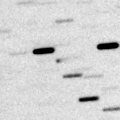
|
Now it is 17.5 mag (Jan. 17, Hidetaka Sato). It keeps observable at 16 mag in the morning sky from February to April.
Date(TT) R.A. (2000) Decl. Delta r Elong. m1 Best Time(A, h)
Mar. 2 18 52.76 -14 20.8 1.787 1.531 58 15.9 5:04 (309, 23)
Mar. 9 19 13.56 -13 41.8 1.757 1.538 60 15.9 4:55 (308, 23)
|
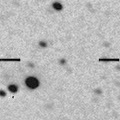
|
Now it is 16.4 mag (Jan. 6, J. F. Hernandez). It is expected to brighten up to 5-6 mag in 2014 autumn. In 2013, it keeps observable in good condition until autumn when it brigthens up to 13-14 mag.
Date(TT) R.A. (2000) Decl. Delta r Elong. m1 Best Time(A, h)
Mar. 2 17 33.37 11 26.7 6.517 6.441 81 16.2 5:04 (307, 56)
Mar. 9 17 33.56 12 8.1 6.354 6.380 87 16.1 4:55 (312, 59)
|
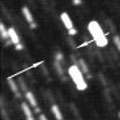
|
Now it is 16.1 mag (Jan. 16, Jakub Cerny). In the Southern Hemisphere, it will be observable at 15-16 mag in good condition for a long time until summer. It is not observable at all in the Northern Hemisphere.
Date(TT) R.A. (2000) Decl. Delta r Elong. m1 Best Time(A, h)
Mar. 2 1 55.42 -61 20.6 4.585 4.242 63 16.1 19:20 ( 26,-18)
Mar. 9 2 9.80 -59 36.3 4.605 4.266 64 16.1 19:26 ( 29,-19)
|
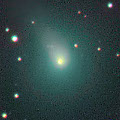
|
It brightened much faster than expected, and reached up to 10.0 mag in summer (Aug. 9, Juan Jose Gonzalez). Now it is fading, but it is bright as 13.3 ma still now (Feb. 2, Hidetaka Sato). It keeps observable in good condition for a while after this.
Date(TT) R.A. (2000) Decl. Delta r Elong. m1 Best Time(A, h)
Mar. 2 6 40.79 5 17.1 2.712 3.293 117 16.3 19:59 ( 0, 60)
Mar. 9 6 36.55 4 34.9 2.876 3.349 110 16.6 19:27 ( 0, 60)
|
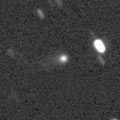
|
Now it is 14.8 mag (Jan. 9, A. Novichonok). It keeps 15-16 mag until February. It keeps observable in good condition for a long time until the comet fades out in the Northern Hemisphere. It is not observable until 2013 summer in the Southern Hemisphere. By the way, Juan Jose Gonzalez reported it extremely bright as 10.4 mag visually on Nov. 6.
Date(TT) R.A. (2000) Decl. Delta r Elong. m1 Best Time(A, h)
Mar. 2 0 59.47 46 50.5 4.069 3.694 61 16.4 19:20 (127, 34)
Mar. 9 1 5.78 45 34.7 4.181 3.712 55 16.5 19:26 (127, 29)
|
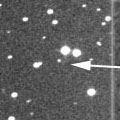
|
Now it is 16.4 mag (Jan. 18, Yasukazu Ikari). It will be observable at 17 mag for a long time from 2013 to 2014.
Date(TT) R.A. (2000) Decl. Delta r Elong. m1 Best Time(A, h)
Mar. 2 12 16.10 5 16.4 2.968 3.909 158 16.6 1:38 ( 0, 60)
Mar. 9 12 12.81 5 33.0 2.930 3.901 166 16.5 1:07 ( 0, 60)
|

|
New bright comet discovered at 15 mag in late December. Now it is 15.8 mag (Feb. 4, Hidetaka Sato). It must have been bright as 13-14 mag and observable in good condition from spring to autumn in the Southern Hemisphere. But it was not discovered. It will be fainter than 18 mag in April, and keeps observable in good condition. It will be observable also in the Northern Hemisphere after this in the evening sky while fading gradually.
Date(TT) R.A. (2000) Decl. Delta r Elong. m1 Best Time(A, h)
Mar. 2 5 21.63 -26 33.3 2.609 2.846 93 16.6 19:20 ( 10, 28)
Mar. 9 5 26.29 -23 18.0 2.727 2.906 90 16.8 19:26 ( 18, 30)
|
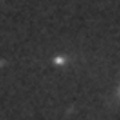
|
Now it is 16.2 mag (Feb. 18, Mt. Lemmon Survey). It keeps observable in good condition at 17 mag from January to June. It locates somewhat low in the Southern Hemisphere.
Date(TT) R.A. (2000) Decl. Delta r Elong. m1 Best Time(A, h)
Mar. 2 8 56.81 21 25.1 1.142 2.056 148 16.9 22:15 ( 0, 76)
Mar. 9 8 54.82 21 55.2 1.166 2.039 141 16.9 21:46 ( 0, 77)
|

|
Not observed yet in this apparition. But it must have already brightened up to 18 mag. It will brighten up to 14 mag and will be observable in excellent condition in summer.
Date(TT) R.A. (2000) Decl. Delta r Elong. m1 Best Time(A, h)
Mar. 2 15 2.90 -1 56.0 1.605 2.232 116 17.5 4:24 ( 0, 53)
Mar. 9 15 8.98 -1 32.6 1.500 2.192 121 17.2 4:02 ( 0, 53)
|
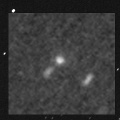
|
It is expected to brighten up to 11 mag and become observable in excellent condition in 2014 spring. Now it is 17.0 mag (Feb. 18, Catalina Sky Survey). In the Northern Hemisphere, it keeps observable in good condition until early summer. It locates low in the Southern Hemisphere.
Date(TT) R.A. (2000) Decl. Delta r Elong. m1 Best Time(A, h)
Mar. 2 8 49.21 39 55.0 3.671 4.452 137 17.3 22:07 (180, 85)
Mar. 9 8 44.20 40 20.8 3.678 4.388 130 17.3 21:35 (180, 85)
|
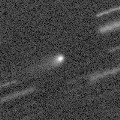
|
Now it is 17.3 mag (Feb. 19, K. Hills). It brightened up to 16.5 mag in 2012. It will be observable in good condition again at 17.5 mag in 2013 spring.
Date(TT) R.A. (2000) Decl. Delta r Elong. m1 Best Time(A, h)
Mar. 2 13 54.54 4 49.2 5.257 5.992 134 17.4 3:16 ( 0, 60)
Mar. 9 13 48.03 5 27.5 5.192 6.010 142 17.4 2:42 ( 0, 60)
|
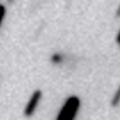
|
It was identified with an old comet discovered in 1931 by Tombaugh. It was unusually bright as 12.5 mag in 1931. Now it is 16.9 mag (Feb. 8, Toshiyuki Takahashi). It keeps 17.5 mag until March, and keeps observable in excellent condition in the Northern Hemisphere. It locates low in the Southern Hemisphere.
Date(TT) R.A. (2000) Decl. Delta r Elong. m1 Best Time(A, h)
Mar. 2 6 45.97 36 47.5 1.825 2.442 117 17.7 20:05 (180, 88)
Mar. 9 6 50.60 36 44.8 1.901 2.444 111 17.8 19:42 (180, 88)
|
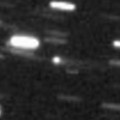
|
Now it is 17.7 mag (Jan. 11, V. Gerke, S. Plaksa, A. Novichonok). It reached up to 17 mag in last winter between 2011 and 2012. It will be observable in good condition again at 17.5 mag in this winter.
Date(TT) R.A. (2000) Decl. Delta r Elong. m1 Best Time(A, h)
Mar. 2 9 10.10 17 58.9 3.298 4.206 153 17.8 22:28 ( 0, 73)
Mar. 9 9 7.07 18 8.2 3.360 4.215 145 17.9 21:58 ( 0, 73)
|

|
It was observed around 20 mag in 2012 spring. But it has not been observed recently. It will be observable at 17.5 mag from spring to summer.
Date(TT) R.A. (2000) Decl. Delta r Elong. m1 Best Time(A, h)
Mar. 2 17 35.98 -24 33.2 2.658 2.617 76 18.0 5:04 (332, 25)
Mar. 9 17 45.80 -24 12.3 2.570 2.617 81 17.9 4:55 (334, 26)
|
|
![]()
 125P/Spacewatch
125P/Spacewatch C/2012 K1 ( PanSTARRS )
C/2012 K1 ( PanSTARRS ) C/2011 O1 ( LINEAR )
C/2011 O1 ( LINEAR ) C/2011 UF305 ( LINEAR )
C/2011 UF305 ( LINEAR ) C/2012 A2 ( LINEAR )
C/2012 A2 ( LINEAR ) P/2012 B1 ( PanSTARRS )
P/2012 B1 ( PanSTARRS ) C/2012 Y3 ( McNaught )
C/2012 Y3 ( McNaught ) 175P/Hergenrother
175P/Hergenrother 98P/Takamizawa
98P/Takamizawa C/2012 X1 ( LINEAR )
C/2012 X1 ( LINEAR ) C/2010 R1 ( LINEAR )
C/2010 R1 ( LINEAR ) 274P/2012 WX32 ( Tombaugh-Tenagra )
274P/2012 WX32 ( Tombaugh-Tenagra ) 244P/2010 Q1 ( Scotti )
244P/2010 Q1 ( Scotti ) 91P/Russell 3
91P/Russell 3![]()

































